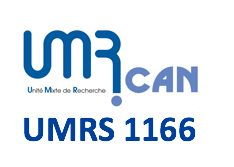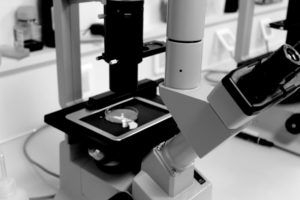
The Ion Channel Regulation Conference, August 14-19, 2022, Nova Scotia – Canada
Elise BALSE, Assistant Professor, Sorbonne University, U1166-Research Unit on Cardiovascular and Cardiometabolism Diseases – Head of Team 3 Molecular and Cellular Plasticity in Cardiovascular Diseases
Ion Channel Trafficking: Control Of Ion Channel Density As A Target For Antiarrhythmics ?
Abstract
The intracellular machinery that mediates the trafficking, anchoring, and organization of ion channels in specialized domains of the cardiomyocyte plasma membrane appears to be a major source of channel dysfunction during cardiac arrhythmias. This has been well established with the discovery of mutations in genes encoding several ion channels leading to trafficking defects during inherited cardiac arrhythmias. In acquired arrhythmias, remodeling of the myocardial tissue involving alterations of the cardiomyocyte microenvironment such as adipo-fibrous infiltration, changes in hemodynamic stress and alteration of contacts between myocytes are common factors that disorganize normal channel trafficking. Here we will present the work done on the intracellular trafficking of two cardiac ion channels, the KV1.5 channel (IKur current) and the NaV1.5 channel (INa current).
1) At the cellular level, atrial fibrillation (AF) is characterized by a shortening of the action potential (AP) duration in atrial myocytes, as the consequence of with the reported down-regulation of repolarization currents, notably KV1.5 channel. The development of KV1.5 channel blockers, carrying the atrial-specific IKur current, has been a promising avenue for the treatment of this condition. We have shown that the KV1.5 channel is highly subject to rapid regulation of its membrane expression, induced either by changes in cardiomyocyte lipid content or by the increased shear stresses observed during atrial dilation, both of which promote the development of AF. The lability of KV1.5 channel expression on the surface of atrial cells and the alteration of the actors involved in its intracellular trafficking during AF could explain the failure of antiarrhythmic therapies in this pathology.
2) The NaV1.5 sodium channel, responsible for the early depolarization phase of the AP, is associated with many partners promoting its membrane expression that can be divided into two classes according to their localization in the cardiomyocyte: the intercalated disc and the lateral membrane. We identified CASK as a new partner of the NaV1.5 channel, which unlike the other partners inhibits anterograde trafficking of the channel. The multi-modular structure of CASK also confers the ability to interact with the dystrophin-glycoprotein complex at the lateral membrane suggesting that CASK would control channel release at adhesion sites in cardiomyocytes. Finally, if the INa current is greater at the intercalated disc, promoting anisotropic AP conduction under physiological conditions, the decrease in CASK expression observed in dilated atria could be arrhythmogenic.



